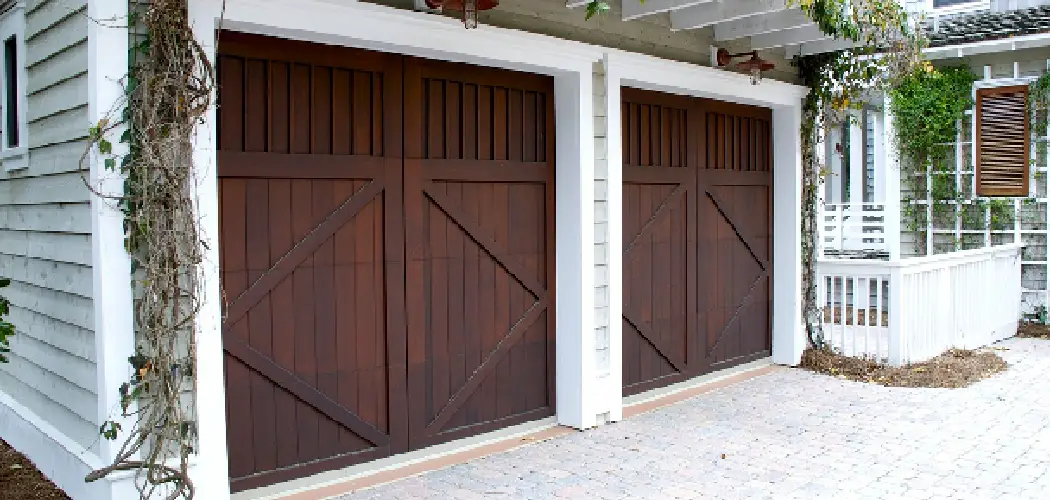Garage doors are often the main point of entry to your home, but they can also be a major source of noise pollution. If you have a noisy neighborhood or a busy street near your home, you may be looking for a way to soundproof your garage door.
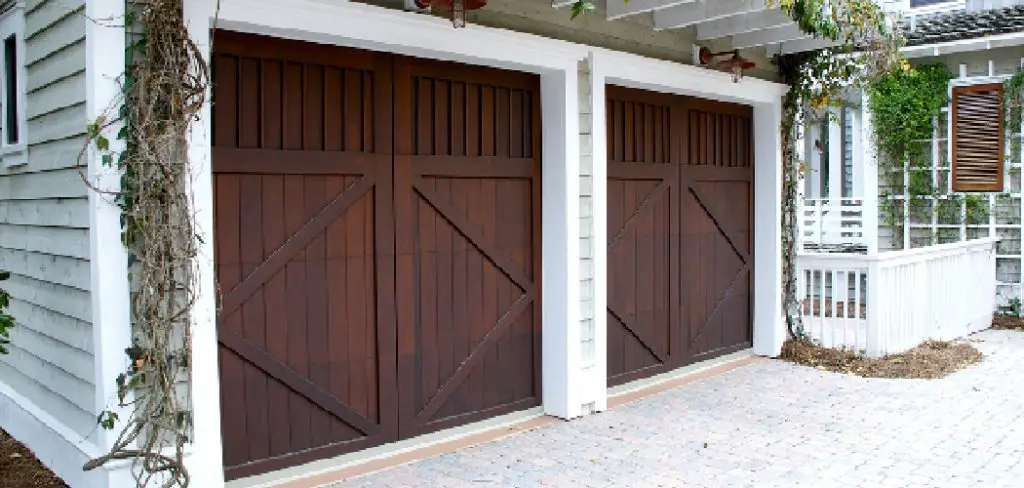
Soundproofing your garage door can not only help reduce outside noise, but it can also improve the insulation of your garage, making it more energy-efficient. Fortunately, soundproofing a garage door is a simple DIY project that can be completed in just a few hours.
In this article, we will discuss these methods in detail and provide step-by-step instructions on how to soundproof a garage door effectively.
What Is the Best Sound Insulation for a Garage Door?
The best sound insulation for a garage door is a combination of several materials, including acoustic foam panels, weather stripping, mass-loaded vinyl (MLV), and acoustic sealant.
Acoustic foam panels help to trap noise and reduce echoes inside the garage, while weather stripping can be used to further reduce vibrations between the door and its frame.
MLV is a heavy, rubberized material that acts as an effective sound barrier and can be easily installed on the walls of the garage. Acoustic sealant seals gaps around the door to further reduce noise leakage. All of these materials provide effective insulation against airborne sounds, such as those created by cars, tools, and more.
When used in combination with one another, they provide the best sound insulation for a garage door. When installing these materials on a garage door, it is important to use the appropriate fixings to ensure that everything is securely attached and airtight.
Additionally, make sure to wear protective gear when dealing with sealant or other potentially hazardous materials. With the right combination of soundproofing materials and proper installation, you can significantly reduce the amount of noise that comes through your garage door.
What Blocks Out Noise?
To block out noise effectively, it’s important to understand what materials are the most effective for soundproofing. Generally, heavier and denser materials are more effective at blocking out noise than lighter and less dense material.

This is because heavy and dense materials absorb sound waves better, whereas lighter and less dense material reflect sound waves away from the source.
The most effective material for soundproofing is mineral wool, or fiberglass insulation. It is a dense, non-flammable material that effectively blocks out sound waves and absorbs noise. Other materials that are commonly used to soundproof a garage door include foam rubber, carpet padding, mass-loaded vinyl sheets, acoustic sealant, and acoustic blankets.
To soundproof a garage door effectively, it’s important to use multiple layers of different materials. For example, you can start by adding a layer of mineral wool insulation on the inside of the door, then adding a sheet of mass-loaded vinyl to the outside. You can then add foam rubber or carpet padding to the inside of the door frame and acoustic sealant around the edges.
Finally, you can hang an acoustic blanket over the garage door when it’s closed. This combination of materials will help to effectively block out noise from outside sources and provide a more peaceful environment inside your garage.
10 Methods How to Soundproof a Garage Door
1. Hang a Blanket over the Door
One of the simplest and most effective ways to soundproof a garage door is to hang a heavy blanket over it. This will help to absorb some of the noise that is generated when the door is opened and closed. Additionally, it will help to insulate the door, which will further reduce noise levels.
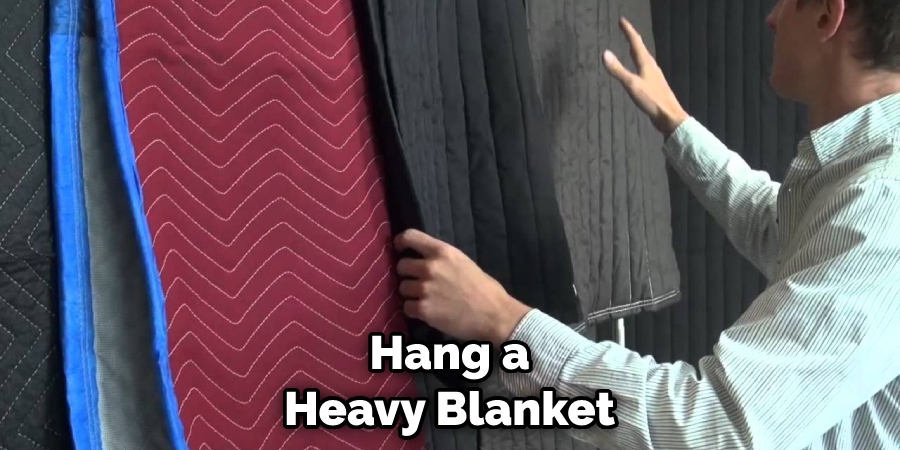
To hang the blanket, you will need to purchase curtain rods or a similar product that can be used to attach the blanket to the door frame. After the rods have been installed, simply hang the blanket over the door and secure it in place.
2. Install Weather Stripping
Another easy way to soundproof a garage door is to install weather stripping around it. This will create a seal that will prevent noise from entering or escaping through the cracks around the door.
Additionally, the seal will also help keep out drafts that can cause a drop in temperature inside the garage. To install weather stripping, measure and cut the weather stripping to the size of your garage door. Then, apply adhesive to one side of the strip and press it firmly against the door.
3. Add Mass to the Door
Adding mass to a garage door can also help to reduce noise levels. This can be done by attaching a layer of plywood or another type of sheet material to the door. This will help to absorb some of the sound that is generated when the door is used.
It is important to use a material that can withstand the elements, such as extreme temperatures and moisture. Once the sheet material is attached, it should be sealed with a weatherproof sealant to ensure it stays in place.
4. Use Soundproofing Curtains
Soundproofing curtains can also be used to reduce noise levels in a garage. These curtains are typically made from thick, dense materials that are designed to block out sound.
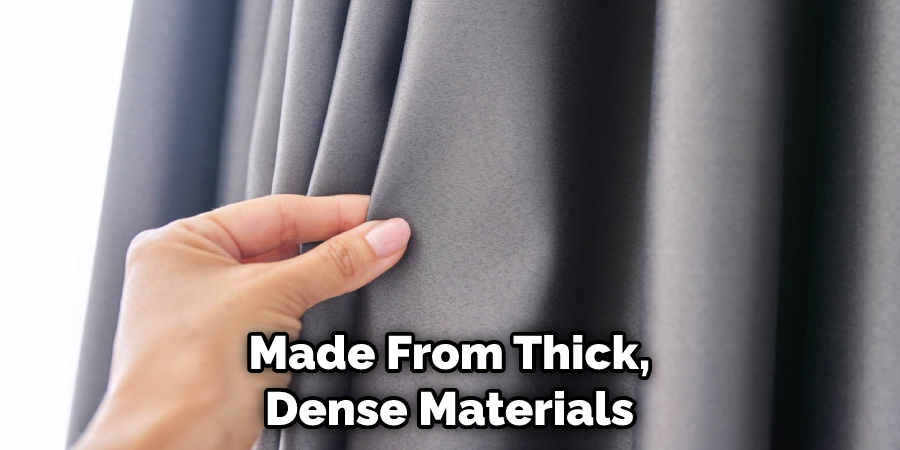
They can be hung over the door or around the perimeter of the garage to provide maximum sound reduction. They are relatively cost-effective, easy to install and remove, and can be found in many home improvement stores.
5. Install Soundproofing Sealant
There are various types of sealants that can be used for soundproofing, including silicone, latex, and fiberglass. These sealants can be applied around the perimeter of the door or on any cracks or gaps that may exist.They work by creating a barrier that prevents noise from passing through.
Additionally, they can be used to seal any air gaps that could cause drafts or leaks. Once the sealant is applied, it should be left to dry for at least 24 hours before using the door again. It is important to note that sealants may need to reap periodically in order to maintain the soundproofing effects.
6. Use Soundproofing Tape
Soundproofing tape is another effective way to seal cracks and gaps around a garage door. This tape is typically made from foam or another type of material that is designed to block out sound. It can be applied around the perimeter of the door or on any cracks or gaps that may exist.
To ensure that the tape is properly applied, measure and mark where it should go before cutting it to size. This will help ensure that you get a good seal and maximum soundproofing.
Once it’s applied, press the tape firmly onto the door frame or gap to get a tight seal. This should help reduce the amount of sound coming in and out of the garage door.
7. Hang Soundproofing Panels
Soundproofing panels are another option for reducing noise levels in a garage. These panels are typically made from thick, dense materials that are designed to block out sound.
They can be hung over the door or around the perimeter of the garage to provide maximum sound reduction. If you’re looking for a quick and easy solution, hanging soundproofing panels is a great option.
8. Install Acoustic Sealant
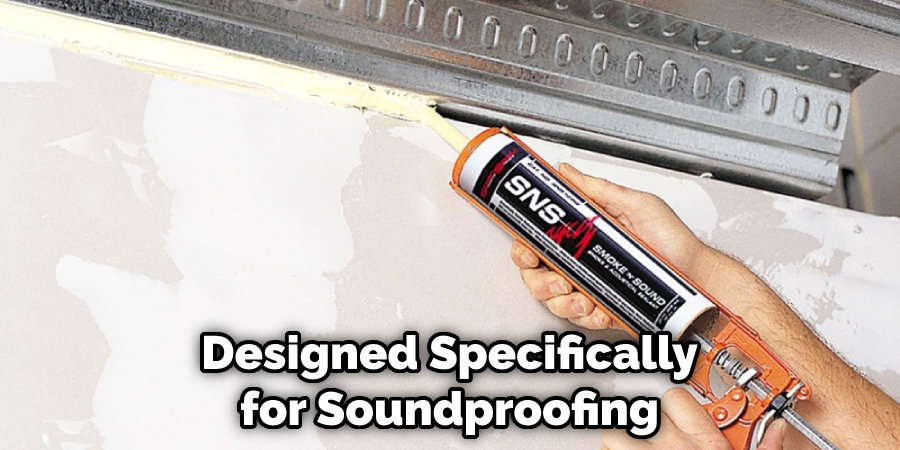
An acoustic sealant is a type of sealant that is designed specifically for soundproofing. It works by creating an airtight seal between two surfaces. This can be used to fill in any gaps or cracks around your door, preventing sound from leaking through them.
9. Install Mineral Wool Insulation
Mineral wool insulation is one of the most effective materials for soundproofing a garage door. It is a dense material that has sound absorption abilities.
It can be used to fill any gaps or spaces between the door and its frame, as well as any other areas that need to be better insulated. Mineral wool insulation is typically sold in batts, which can be cut to fit any size opening.
10. Use Mass-Loaded Vinyl Sheets
Mass-loaded vinyl sheets are another effective way to soundproof a garage door. These sheets are typically made of a sound-absorbing material such as rubber, foam, or cork. This material is then combined with a heavy material like lead to increase the soundproofing properties. To use mass-loaded vinyl sheets on your garage door, measure the door and cut the sheet to fit its size.
Conclusion
After following these steps to soundproof a garage door, you should be able to enjoy peace and quiet in your home. Plus, with a lower decibel level, rest assured that your neighbors won’t constantly have to hear your children practicing their saxophone or drums!
Investing in some soundproof material for your garage door is sure to pay off in the long run. Who knows—maybe this will even save you from costly noise complaints from those living nearby!
With these tips on how to soundproof a garage door, you are now equipped with the knowledge of what it takes for enough sound absorption that you can finally enjoy some sanity and respite. So don’t let the loud noises win—put an end to them with a well-soundproofed garage door today.

